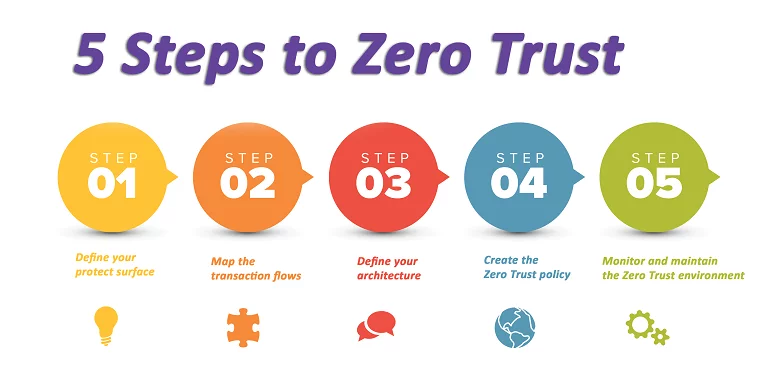5 Steps to Implementing the Zero Trust Framework
Zero trust requires that all devices and users in the network are vetted and authorized before they are allowed to access applications and data. This includes local and cloud-based resources and workers who work across locations and in hybrid environments.
Zero Trust also needs a robust identity management program and continuous multi-factor authentication. This narrows the trust focus and helps mitigate the risk of privileged credential attacks.
Identify Your Targets
Table of Contents
To get the most from your marketing efforts, it’s crucial to understand who your target audience is. This includes a thorough analysis of their demographics, their pain points and their competitors.
Your marketing strategy should be based on this data, which can significantly improve your sales. You’ll be able to create more effective advertising campaigns and messaging that will make potential customers feel confident about your brand.
Once you clearly understand your target market, it’s time to create personas. These fictional customer profiles can help you analyze your audience and determine which aspects of your products or services are most valuable to them.
You can use this information to determine your total addressable market, the maximum number of people who could buy your product. This can help you determine if your offer is viable and whether any gaps in the market could cause your business to lose out.
Identify Your Risks
Before implementing the zero trust framework, it is essential to identify your risks. These can range from a minor issue that will only cause inconvenience to a significant risk that could result in financial losses for your company.
You can do this using various methods, including brainstorming sessions and root cause analysis. You can also ask employees for feedback on their day-to-day experience with risk factors.
This will give you a good idea of your business’s threats and whether they are worth considering for a zero trust strategy. It will also help you clearly understand what you need to do to protect your company from threats.
Create a Strategy
A strategy is a framework that gives you direction and makes you aware of your goals. It usually includes a series of tactics that you will use to achieve those goals.
A good strategy will be well-researched and give you specific directions. It will also be based on the principles that you have chosen to ground your business in.
It will include a series of policies, procedures and technologies that you will use to ensure security and reduce the risk of data breaches.
Zero trust requires a combination of advanced technologies, including risk-based multi-factor authentication, identity protection, next-generation endpoint security, and robust cloud workload technology. It also involves automated context collection and response, incorporating behavioral data for the most accurate answer.
This approach can be challenging, but it is essential to reducing the attack surface of data and the impact and severity of cyberattacks. Zero trust is one of the most effective strategies for today’s dynamic IT environments and can help prevent breaches and mitigate their effects.
Implement the Strategy
Implementing the zero trust framework can be a challenging, time-consuming process. This requires a holistic strategy to cover the entire IT environment.
Using the zero trust framework, you can achieve more robust security that travels across the edge, cloud, and data center by verifying identities in place of relying on implicit trust. This is a more efficient way to secure all resources, including unmanaged devices and Internet of Things (IoT) hardware, without disrupting user experience or productivity.
You can then establish robust identity verification and validation policies and enforce least privilege access to only explicitly authorized resources. For example, if you want Salesforce only to allow users from the sales department, you need to be able to identify and validate those users’ devices before granting access.
Once you’ve implemented your strategy, you need to monitor it regularly. This will help you see how it is performing and make adjustments if necessary. It will also let you know if you have any gaps in coverage or unexpected security posture changes.
Monitor the Strategy
Monitoring is one of the biggest challenges in implementing a zero trust strategy. Because the framework is a comprehensive cross-discipline strategy, organizations must watch it in many different areas.
Identify any potential issues that may arise. This includes reviewing your current security controls and assessing the level of trust they provide.
In addition, it is essential to monitor your technology to ensure it can work with your new zero trust framework. This will help you minimize growing pains, friction with legacy technology, and the need for a complete infrastructure overhaul.
This is a complex and lengthy process, especially when you’re trying to build a new framework with many moving parts.
The core of a zero trust strategy is rooted in the concept of “never trust, always verify.” This means continuously authenticating and validating access based on user identity, location, device health, data sources, service or workload, and anomalies. This limits the “blast radius” of an attacker, minimizing the damage they can do to your organization.




